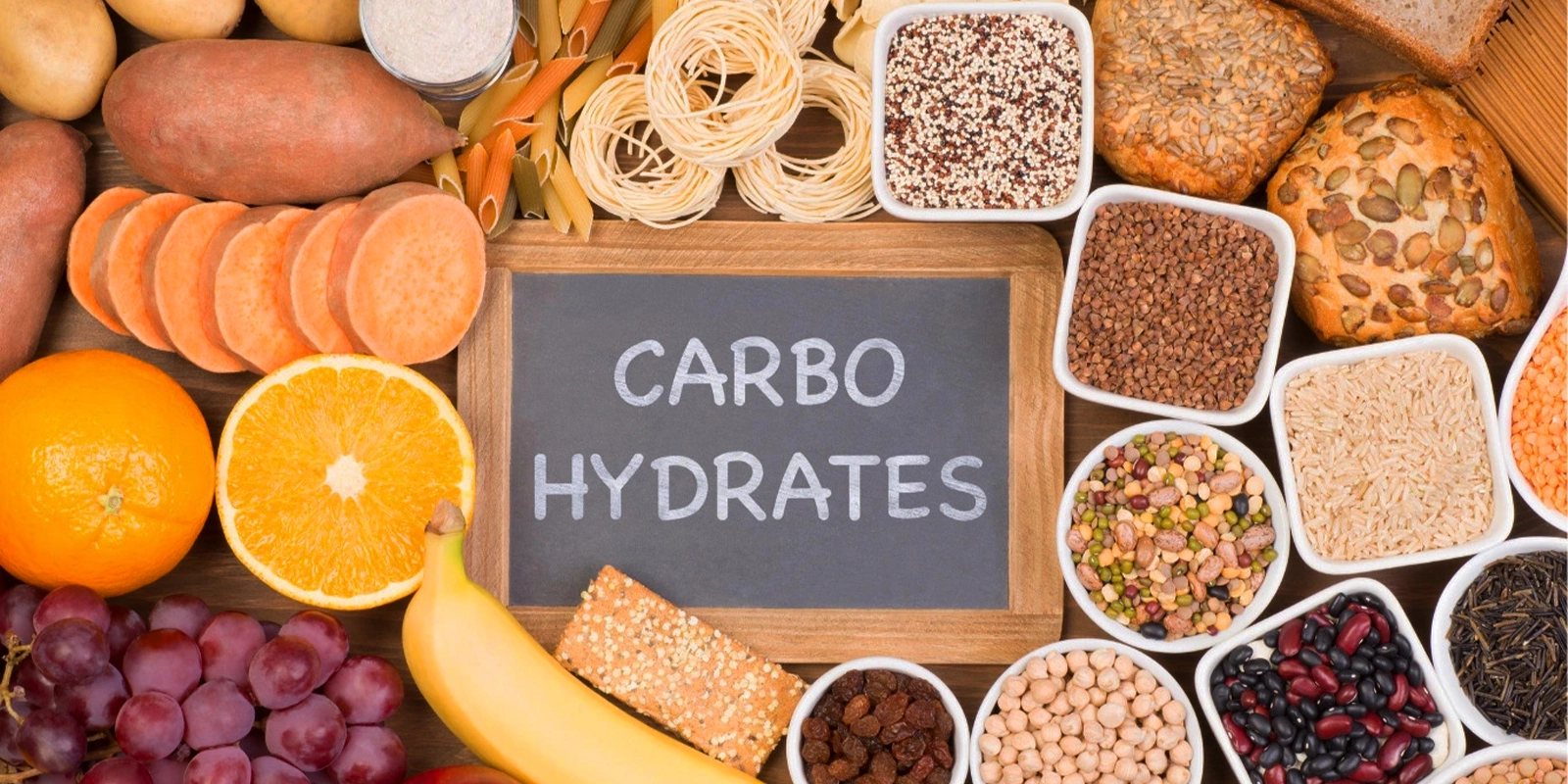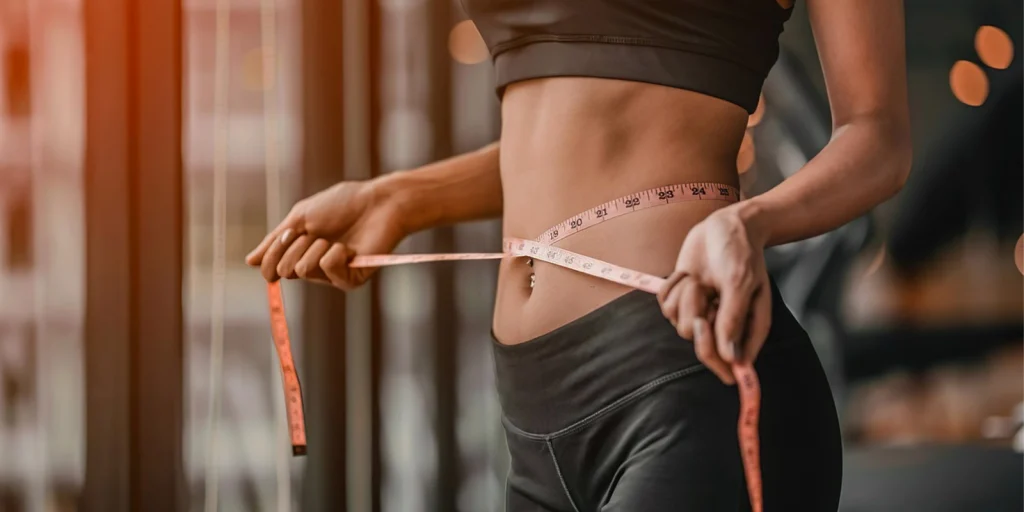


If you’ve been looking for a way to build muscle while losing fat, you might have heard the term carb cycling to get lean.
This dietary approach promises to give you the best of both worlds, maximizing fat loss without sacrificing muscle mass.
The great news is that it’s backed by science, and when done correctly, carb cycling to get lean can help you achieve your fitness goals in as little as 8 weeks.
In this article on RambodFit, we’ll break down the fundamentals of carb cycling to get lean, its benefits for muscle gain and fat loss, and how you can structure an 8-week plan to reach your goals.
We’ll also dive into the science behind carb cycling to get lean and how it can be a game-changer for both athletes and everyday fitness enthusiasts. Let’s get started!
Table of Contents

Carb cycling is a dietary strategy where you alternate between high-carb, moderate-carb, and low-carb days to optimize your body’s use of carbohydrates.
On high-carb days, you consume more carbs to fuel workouts, enhance performance, and help in muscle recovery. On low-carb days, your intake is reduced to promote fat burning.
The idea is simple, by carb cycling to get lean, you can get the benefits of both high and low-carb diets without the drawbacks of either.
High-carb days
These are often planned around your intense workouts. The extra carbs provide your body with glycogen (stored energy), which helps you perform better in the gym and recover faster.
Low-carb days
On these days, your body is forced to burn fat for energy, which helps reduce body fat while maintaining muscle.
1. Improved fat loss
By lowering carb intake on rest days or less intense workout days, you force your body to burn fat for fuel, which can lead to faster fat loss.
2. Muscle preservation
On high-carb days, the extra glycogen helps maintain muscle mass and boosts workout performance, ensuring that you’re not sacrificing muscle during the fat loss phase.
3. Reduced metabolic slowdown
Long-term low-carb dieting can slow your metabolism and reduce leptin (a hormone that regulates hunger). Carb cycling to get lean gives your body a metabolic boost by increasing carb intake on certain days.
The principles behind carb cycling to get lean are rooted in how your body metabolizes macronutrients (carbs, protein, and fats) and how it responds to energy availability.
Let’s explore the science behind why carb cycling to get lean works for muscle gain and fat loss.
1. Carbohydrates and Muscle Glycogen
Carbohydrates are the body’s main source of energy during high-intensity activities, especially weightlifting and resistance training.
When you consume carbs, your body breaks them down into glucose, which is then stored as glycogen in the muscles and liver.
According to research published in the Journal of Sports Sciences, higher muscle glycogen levels enhance endurance and strength performance during intense training sessions.
This means that on high-carb days, you’ll be able to push harder in your workouts, leading to better gains in muscle size and strength.
2. Insulin and Muscle Building
One of the most important hormones involved in muscle gain is insulin, which is stimulated by carbohydrate intake.
Insulin is anabolic (muscle-building). After eating carbs, insulin spikes, which helps transport nutrients, including amino acids and glucose, into muscle cells for repair and growth.
A study from the American Journal of Clinical Nutrition showed that consuming carbs post-exercise leads to an insulin response that can improve muscle protein synthesis when combined with protein.
This is why high-carb days on your intense workout days are beneficial, they boost insulin, which enhances muscle recovery and growth.
3. Fat Loss Through Low-Carb Days
On low-carb days, when you reduce carbohydrate intake, your body is forced to tap into fat stores for energy.
Studies have shown that low-carb diets can increase fat oxidation (the process of breaking down fat for fuel) and improve insulin sensitivity.
In a low-carb state, your body becomes more efficient at using fat as a fuel source, which is key for fat loss.
By incorporating low-carb days into your week, you can stimulate fat-burning while still consuming enough calories to preserve muscle.
Now that you understand how carb cycling to get lean works, let’s dive into creating a practical 8-week plan for muscle gain and fat loss.
The key is to plan your carb intake according to your workout intensity and overall goals.
Step 1: Determine Your Daily Caloric Needs
Before starting carb cycling to get lean, calculate your daily caloric needs based on your activity level and goals. There are many online calculators available.
Step 2: Calculate Your Macronutrient Breakdown
Next, determine how much protein, fat, and carbs you need each day. Here’s a general guideline:
– Protein: 1.0-1.2 grams per pound of body weight
– Fats: 20-30% of total daily calories
– Carbs: Fill in the remaining calories based on your goals
On high-carb days, you’ll increase your carb intake by lowering fat. On low-carb days, you’ll decrease your carbs and raise fat intake slightly to maintain energy levels.
Step 3: Schedule Your High, Moderate, and Low-Carb Days
A typical carb cycling schedule will alternate between high, moderate, and low-carb days based on your workout intensity. Here’s a sample weekly schedule:
– Monday (High-Carb Day): Intense weightlifting session (legs, back, chest)
– Tuesday (Low-Carb Day): Light cardio or rest
– Wednesday (Moderate-Carb Day): Moderate weightlifting session (shoulders, arms)
– Thursday (Low-Carb Day): Rest or light activity
– Friday (High-Carb Day): Intense weightlifting session (legs, full-body)
– Saturday (Moderate-Carb Day): Active recovery or moderate weightlifting
– Sunday (Low-Carb Day): Rest day
On high-carb days, you’ll want to consume roughly 50-60% of your total calories from carbohydrates. On low-carb days, aim for around 10-20% of your calories from carbs. Moderate-carb days will fall somewhere in between, around 30-40%.
Step 4: Adjust Your Intake Based on Progress
As the 8 weeks progress, monitor your results. If you’re losing too much weight too quickly (more than 1-2 pounds per week), you might need to increase your carbs or overall calorie intake slightly to prevent muscle loss.
If fat loss stalls, consider adding an extra low-carb day or increasing your activity level.
Example Meal Plans for Carb Cycling
Here’s a sample of what your meals might look like on different carb cycling days to get lean.
High-Carb Day
– Breakfast: Oatmeal with almond butter, berries, and a protein shake
– Lunch: Grilled chicken breast, quinoa, and steamed vegetables
– Snack: Greek yogurt with honey and banana
– Dinner: Salmon, brown rice, and roasted broccoli
– Post-Workout: Protein shake with a banana
Low-Carb Day
– Breakfast: Scrambled eggs with spinach and avocado
– Lunch: Grilled steak with mixed greens and olive oil dressing
– Snack: Almonds and cottage cheese
– Dinner: Chicken breast with a little potato
– Snack: Hard-boiled eggs with a handful of nuts
Moderate-Carb Day
– Breakfast: Scrambled eggs with sweet potatoes and spinach
– Lunch: Turkey burger with a side of roasted vegetables
– Snack: Apple slices with peanut butter
– Dinner: Grilled fish, quinoa, and a mixed green salad
– Snack: Cottage cheese with berries
Carb cycling to get lean is a powerful dietary strategy that allows you to manipulate your carbohydrate intake to promote muscle gain and fat loss simultaneously.
By alternating between high, moderate, and low-carb days, you can fuel your workouts, preserve muscle, and accelerate fat loss all within 8 weeks.
If you’re looking for a way to break through plateaus and optimize your diet, carb cycling to get lean might just be the answer.
Hope you find this article useful and for more scientific-based articles you can check out The American Journal of Clinical Nutrition.
You can use carb cycling for as long as it fits your goals. However, an 8-week cycle is a good starting point to see noticeable changes in fat loss and muscle gain.
Absolutely! Carb cycling is a flexible strategy that can be tailored to any fitness level. Beginners can start with a simple low-high carb split and progress to more advanced cycles as they become comfortable.